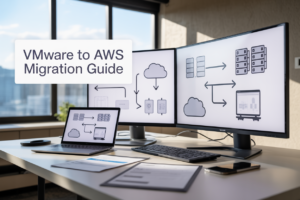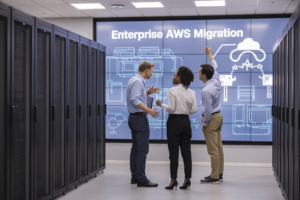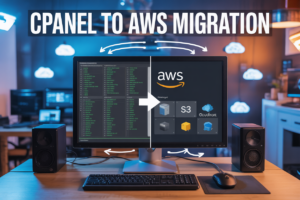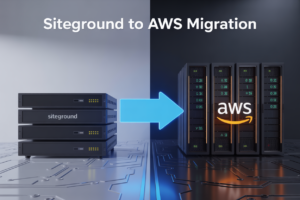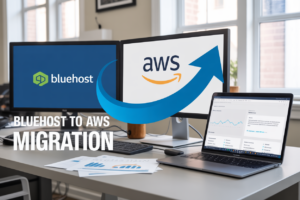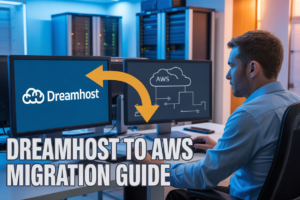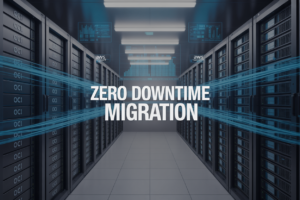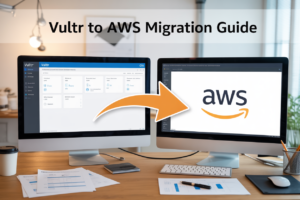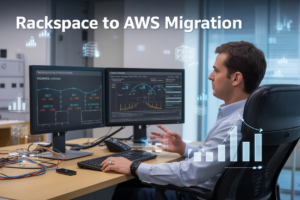Your AWS resources are changing behind your back, and you might not even know it. AWS infrastructure drift happens when your actual cloud resources don’t match what’s defined in your infrastructure as code templates—creating security gaps, compliance headaches, and unexpected costs that can blindside your business.
This guide is built for DevOps engineers, cloud architects, and IT teams who need practical solutions to stop infrastructure drift from spiraling out of control. Whether you’re managing a handful of resources or thousands, drift detection and prevention should be at the top of your priority list.
We’ll walk you through the essential AWS drift detection tools like AWS Config and CloudFormation drift monitoring that can catch changes before they cause problems. You’ll also learn how to build a solid drift prevention strategy using Terraform drift detection and other infrastructure as code practices. Finally, we’ll show you how to set up automated AWS drift remediation that keeps your cloud infrastructure management running smoothly without constant manual oversight.
Understanding AWS Infrastructure Drift and Its Business Impact
Define configuration drift and why it occurs in cloud environments
AWS infrastructure drift happens when your actual cloud resources no longer match their original configuration templates or intended state. This deviation occurs naturally as teams make manual changes through the AWS console, apply emergency fixes, or run automated processes that modify resources outside of your infrastructure as code workflows. Cloud environments are particularly susceptible because they’re dynamic by nature, with multiple engineers accessing resources simultaneously.
Identify common causes of infrastructure drift in AWS deployments
Manual changes through the AWS Management Console represent the biggest culprit behind infrastructure drift. Emergency hotfixes applied directly to production resources, developers experimenting with settings during troubleshooting, and well-intentioned security updates all contribute to drift. Auto Scaling groups, Lambda function updates, and third-party tools making API calls can also push your AWS resources away from their defined configuration. Even routine maintenance activities like patch management can introduce unexpected changes to your infrastructure state.
Calculate the real costs of unmanaged drift on operations and security
Unmanaged AWS infrastructure drift creates cascading financial impacts across your organization. Security vulnerabilities emerge when resources drift from hardened configurations, potentially leading to compliance violations and breach costs averaging $4.45 million per incident. Operational teams spend 30-40% more time troubleshooting issues in drifted environments, while deployment failures increase by 60% when infrastructure doesn’t match expected configurations. Hidden costs include increased AWS spend from misconfigured resources, failed audits, and the opportunity cost of engineering time spent on manual drift remediation instead of innovation.
Recognize early warning signs before drift becomes critical
Watch for deployment failures that worked previously, as these often indicate underlying infrastructure changes. Monitoring alerts firing for resources you haven’t modified suggest configuration drift is occurring. Performance degradation without code changes, unexpected AWS billing increases, and security scanning tools flagging new vulnerabilities all point to potential drift issues. Teams reporting different behavior between environments typically indicates configuration inconsistencies have developed over time.
Essential Tools and Services for AWS Drift Detection
Leverage AWS Config for continuous compliance monitoring
AWS Config serves as your infrastructure watchdog, continuously tracking resource configurations and detecting deviations from defined baselines. This service provides real-time visibility into AWS resource drift monitoring by capturing configuration changes across your entire environment. Config rules automatically evaluate resources against compliance requirements, sending alerts when drift occurs. The service maintains a comprehensive configuration history, enabling you to pinpoint exactly when and what changed in your infrastructure, making it essential for AWS drift detection tools strategies.
Implement AWS CloudFormation drift detection capabilities
CloudFormation’s native drift detection compares your actual stack resources against the template definitions, identifying discrepancies in properties, tags, and resource states. Run drift detection on-demand or schedule regular checks to catch AWS CloudFormation drift early. The service highlights specific differences between expected and actual configurations, showing modified, deleted, or added resources. This built-in capability integrates seamlessly with your infrastructure as code drift management workflow, providing detailed reports that pinpoint exact configuration mismatches without requiring additional tools or complex setup procedures.
Use AWS Systems Manager for configuration management
Systems Manager offers powerful configuration management through Parameter Store, Patch Manager, and State Manager components that help prevent AWS infrastructure drift. Parameter Store centralizes configuration data, ensuring consistent values across environments while State Manager enforces desired configurations on EC2 instances and hybrid infrastructure. The service automatically remediates configuration drift on managed instances, maintaining compliance with your defined policies. Integration with CloudFormation and Config creates a comprehensive drift prevention ecosystem that spans both infrastructure and application-level configurations throughout your AWS environment.
Deploy third-party tools for enhanced drift visibility
Third-party solutions like Terraform, Pulumi, and Spacelift extend AWS drift detection tools capabilities beyond native services, offering advanced visualization and multi-cloud support. These tools provide sophisticated drift detection algorithms that catch subtle configuration changes AWS services might miss. Many integrate with CI/CD pipelines, automatically scanning for drift during deployment processes. Popular options include Bridgecrew, Checkov, and Infracost, which combine drift detection with security scanning and cost optimization, giving you comprehensive infrastructure oversight that complements AWS-native monitoring solutions.
Building Your Drift Prevention Strategy
Establish infrastructure as code best practices with Terraform and CloudFormation
Successful AWS infrastructure drift prevention starts with treating your infrastructure like software code. Both Terraform and CloudFormation provide declarative approaches to defining your AWS resources, creating a single source of truth for your entire infrastructure stack. Store all infrastructure code in version-controlled repositories like Git, enabling you to track every change and maintain a complete audit trail of modifications. Implement mandatory code reviews before any infrastructure changes reach production environments, catching potential drift-causing configurations early in the development process. Use consistent naming conventions and tagging strategies across all resources to simplify drift detection and remediation efforts. Separate your infrastructure into logical modules or stacks, making it easier to isolate and fix drift issues when they occur. Always validate your infrastructure code using built-in tools like terraform plan or CloudFormation change sets before applying changes to live environments.
Create automated policy enforcement using AWS Config Rules
AWS Config Rules serve as your automated watchdogs, continuously monitoring resource configurations against predefined compliance standards. Set up custom rules that specifically target common drift scenarios, such as security group modifications, S3 bucket policy changes, or EC2 instance type alterations. Configure automatic remediation actions that trigger when drift occurs, such as reverting unauthorized changes or sending immediate alerts to your operations team. Use AWS Config’s managed rules as starting points, then customize them to match your organization’s specific compliance requirements and security policies. Create rule hierarchies that escalate violations based on severity levels, ensuring critical drift issues receive immediate attention while minor deviations follow standard remediation workflows. Integrate Config Rules with AWS Systems Manager for automated patch management and configuration enforcement across your entire fleet.
Design change management workflows to prevent unauthorized modifications
Strong change management workflows act as the first line of defense against infrastructure drift. Implement approval gates that require multiple stakeholders to review and authorize any infrastructure modifications before deployment. Use AWS IAM policies to restrict direct console access to production resources, forcing all changes through your established infrastructure as code pipelines. Create different environments (development, staging, production) with progressive permission models that limit who can make changes at each level. Set up automated notifications for any manual console changes, immediately alerting your team when someone bypasses the standard workflow. Establish regular infrastructure reviews where teams can identify and document legitimate configuration changes, ensuring your drift detection tools don’t flag intentional modifications as violations. Document all approved deviations from standard configurations, creating exceptions in your monitoring rules to reduce false positive alerts.
Implementing Automated Drift Remediation Solutions
Configure Automatic Drift Correction Using AWS Lambda Functions
AWS Lambda functions serve as the backbone for automated drift remediation, triggering corrective actions when AWS Config detects infrastructure deviations. Create Lambda functions that parse drift detection events and execute remediation scripts based on predefined rules. Your functions should handle common drift scenarios like security group modifications, IAM policy changes, and resource tag updates. Implement error handling and logging to track remediation success rates. Use environment variables to store configuration parameters and integrate with AWS Secrets Manager for sensitive data. Deploy Lambda functions across multiple regions to ensure comprehensive drift coverage. Set up proper IAM roles with least-privilege access to perform remediation tasks. Consider using Lambda layers for shared code libraries and dependencies to streamline maintenance across multiple remediation functions.
Set Up CloudWatch Alarms for Real-Time Drift Notifications
CloudWatch alarms provide immediate visibility into AWS infrastructure drift events, enabling rapid response to critical configuration changes. Configure custom metrics from AWS Config compliance data to trigger alarms when drift thresholds are exceeded. Set up multi-dimensional alarms that consider both drift severity and affected resource types. Create alarm hierarchies that escalate notifications based on drift impact levels. Integrate alarms with SNS topics to distribute notifications across Slack channels, email lists, and PagerDuty systems. Use CloudWatch composite alarms to reduce noise by combining multiple related drift signals. Implement alarm suppression during planned maintenance windows to prevent false alerts. Configure alarm actions that automatically trigger Lambda remediation functions for low-risk drift scenarios while sending notifications for high-impact changes requiring manual review.
Build Rollback Procedures for Critical Infrastructure Changes
Robust rollback procedures ensure quick recovery from problematic drift remediation actions or unexpected infrastructure changes. Implement automated backup creation before executing any remediation actions, storing previous configurations in S3 with versioning enabled. Develop rollback Lambda functions that can restore resources to their last known good state using stored configuration snapshots. Create rollback playbooks for different resource types including EC2 instances, RDS databases, and networking components. Use AWS Systems Manager documents to standardize rollback procedures across teams. Implement rollback testing in staging environments to validate procedures before production deployment. Set up monitoring to detect when rollback actions complete successfully and verify system stability. Establish clear criteria for when automated rollback should occur versus manual intervention to prevent cascading failures.
Establish Approval Workflows for Drift Remediation Actions
Approval workflows balance automation speed with governance requirements, ensuring critical infrastructure changes receive proper oversight. Implement AWS Step Functions to orchestrate approval workflows that route high-risk drift remediation requests through designated approvers. Create approval matrices based on resource criticality, environment type, and potential business impact. Use AWS SNS and Lambda to send approval requests via email, Slack, or custom applications with embedded approve/reject buttons. Set up time-based escalation that automatically approves low-risk changes after specified waiting periods while requiring explicit approval for critical resources. Integrate workflows with existing ITSM tools like ServiceNow or Jira for comprehensive change tracking. Implement audit logging to track all approval decisions and maintain compliance records. Configure workflow timeouts to prevent indefinite pending states that could delay necessary remediation actions.
Monitoring and Maintaining Long-Term Drift Control
Design comprehensive dashboards for drift visibility across environments
Creating effective AWS drift detection dashboards starts with centralizing data from AWS Config, CloudFormation, and Terraform state files into a unified view. Build multi-environment dashboards that show drift status across development, staging, and production environments using CloudWatch custom metrics and AWS Systems Manager dashboards. Include real-time alerts for critical AWS resource drift monitoring events and visual indicators showing compliance percentages. Integrate third-party monitoring tools like Grafana or Datadog to correlate drift data with application performance metrics. Your dashboards should display drift trends over time, resource categories most prone to drift, and team-specific drift ownership maps.
Establish regular audit schedules and compliance reporting
Schedule automated weekly AWS infrastructure drift scans using AWS Config rules and CloudFormation drift detection APIs. Create monthly compliance reports that summarize drift incidents, remediation times, and repeat offenders across your infrastructure. Set up quarterly deep-dive audits where teams review infrastructure as code drift patterns and update prevention strategies. Implement automated compliance reporting that feeds into your organization’s governance frameworks, including SOC 2 and ISO 27001 requirements. Use AWS Security Hub to aggregate drift findings with other security and compliance data for comprehensive reporting.
Train teams on drift prevention best practices and procedures
Develop hands-on training programs that teach developers how to use Terraform drift detection commands and AWS Config remediation workflows. Create runbooks documenting step-by-step procedures for common drift scenarios, including manual resource changes and failed deployments. Establish certification programs for AWS drift remediation procedures and include drift prevention in your onboarding process for new team members. Host regular lunch-and-learn sessions covering real drift incidents and their root causes. Build a knowledge base with troubleshooting guides and best practices that teams can reference during incident response.
Continuously optimize your drift management processes for scale
Regularly review and refine your AWS CloudFormation drift detection frequency based on environment criticality and change velocity. Implement machine learning-based anomaly detection to identify unusual drift patterns that might indicate security incidents or process failures. Create feedback loops where drift incidents inform improvements to your infrastructure drift prevention policies and tooling. Scale your drift management by automating remediation workflows using AWS Lambda and Step Functions. Establish metrics like mean time to detection (MTTD) and mean time to remediation (MTTR) for cloud infrastructure management performance tracking.
Infrastructure drift isn’t just a technical headache—it’s a real threat to your business operations and security posture. When your AWS resources start wandering away from their intended configurations, you’re looking at potential downtime, compliance failures, and unexpected costs that can quickly spiral out of control. The good news is that you don’t have to accept drift as an inevitable part of cloud management.
Taking control of drift requires a proactive approach that combines the right tools, automated processes, and ongoing monitoring. By leveraging AWS services like Config, Systems Manager, and CloudFormation alongside third-party solutions, you can catch configuration changes before they become problems. Set up your drift detection early, automate your remediation where possible, and make drift monitoring a regular part of your infrastructure management routine. Your future self will thank you when your systems stay stable, secure, and exactly where they’re supposed to be.











